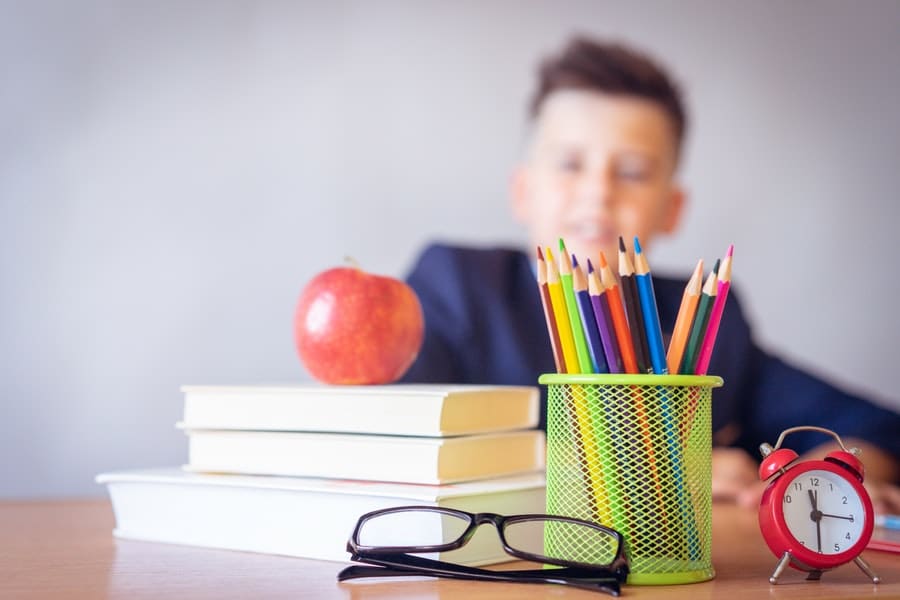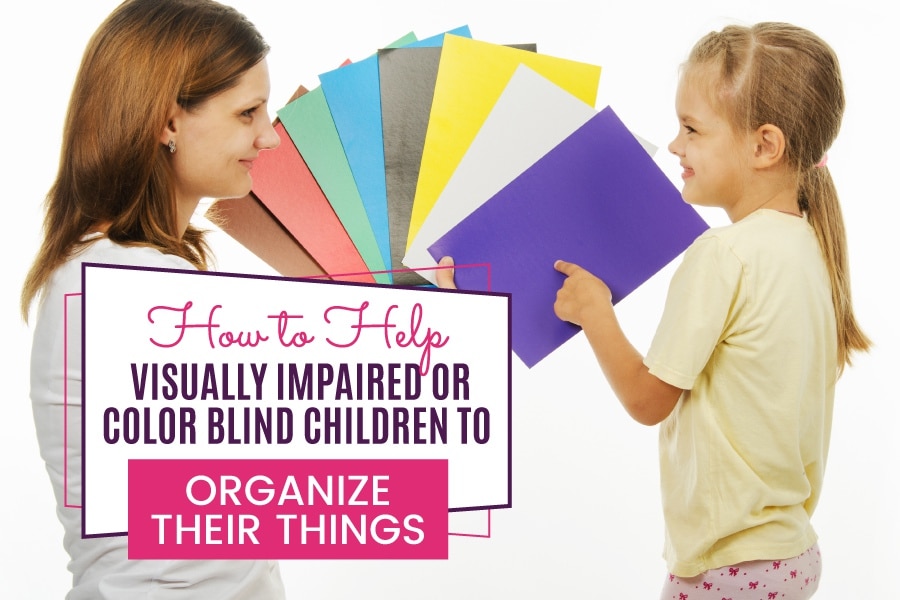As the busy mother working hard to balance duties at work with all that must be done at home, you face even bigger challenges when you have a child who happens to be visually impaired or color blind.
To cut down on the chaos and to keep your home a warm and welcoming environment for family as well as visitors, it pays to focus on getting organized. All children will benefit by learning at an early age the benefits of keeping things properly sorted out, of course. But for those with a visual disability, organization is required for getting ahead in life.
Read on for tips and insight into how you can teach your visually impaired or color blind children to organize their things and bring greater harmony into your home.
1. Organizing the Bedroom

It’s a good idea to begin your organizational efforts in the bedroom, since this is where your child will keep most of his or her items as well as spending time in this space.
Storage solutions may include cabinets, shelves and closets. Since open doors and cabinet drawers can pose a safety hazard to visually disabled children, instruct your kids to keep them closed when not in use.
Proper illumination is essential, especially with children who have difficulty seeing in dim circumstances, so open windows to let in the sun and make sure you have good lighting inside. Consider a battery-powered stick on light for inside the closet, for example.
Color blind children can pick out their own clothing more easily if you sew in tags that tell what color and pattern appears on garments. Large print or Braille labels work for children with severe impairments.
2. Sorting Out School Supplies at Home

Use brightly colored stickers, with high contrast lettering to help your child label items, such as a box of crayons or tools such as rulers and protractors. Label any items in terms of color as needed. A device to output labels in Braille will help to speed up your organization work when preparing your house for a visually impaired student. Make sure to include standard printed text with Braille labels so they are readable by everyone and not just your visually impaired child. Otherwise, a visitor might move something by accident, not realizing where it is supposed to go in your system.
When you are consistent in where you store various items, from erasers to sheets of paper or blank flash cards, your child will be able to find what’s needed with no delay. This makes for a better homework experience or home schooling environment.
3. A System for Taking Care of Other Personal Belongings
Where does your child put his or her backpack when coming home from school or a play date? How are items such as books or toys get stored when not in use? You can designate a place to put the backpack, such as on the floor right next to the desk. Toys should be stored on a shelf or inside a box, as appropriate.
4. Teach Your Children to Avoid Clutter and Explain Why It’s Good to Be Organized

Kids will often resist doing chores such as cleaning up and looking after their belongings. But if you explain to them in clear, simple language how beneficial it is to be organized, you may discover that an explanation can be quite motivating.
For example, ask your child to imagine trying to find a favorite shirt or sweater but having to choose another because they are running late for school or an errand. If they had their things organized, it will be easier to find just what they want with little time to waste.
If they invite a friend over to play but then cannot find the toy amidst the jumble of items strewn about the floor or crammed into a closet, it will become clear that organization ahead of time makes for more fun at play time.
5. Don’t Be Hard On Yourself if it Takes a While for Organizational Lessons to Sink In!
If your initial efforts to help your color blind or visually impaired child to get organized produce less than consistent results, give yourself a break. It takes time to develop new habits. But practice makes perfect, and soon enough, your child will learn how easy it is to do things when everything has its own place and is stowed when not in use.


Well done Kylie. Simple steps easy to follow help for Mothers and colour blind children.
I will post it on our site Colour Blind Awareness and Support Group Australia.